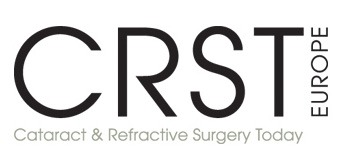THE thought of eye surgery may make people squeamish or fearful of the possible complications and side effects, but eye treatments have come a long way in the last 20 years.
One modern procedure that has gained popularity in recent years is refractive lens exchange (RLE), a more long-lasting solution to common eye problems such as myopia (short-sightedness), hyperopia (long-sightedness) and astigmatism.

Dr Koh’s segment will focus on treatments available to those aged 40 and above.
With this surgery, Vista Eye Specialist senior consultant ophthalmologist, cataract and refractive surgeon Dr Alan Koh said most people would no longer need to wear glasses or contact lenses for most of their lives.
Dr Koh is one of three consultant ophthalmologists speaking about modern vision correction procedures at the StarLIVE talk entitled “Claim 20/20 Vision With Modern Technology” on Sept 15.
Dr Koh’s segment will focus on treatments available to those aged 40 and above, in which long-sightedness is more common.
“The lenses inside our eyes are flexible and changes shape in order to focus on objects at different distances,” he said.
“After 40, however, the lenses become harder and the muscles that control the lens, weaker. It’s part of the ageing process.”
As an alternative to wearing glasses, RLE involves surgically removing the ageing lens and replacing it with a brand new one. The procedure is very similar to cataract surgery.
“Technological advancements have made this procedure very safe and fast,” said Dr Koh.
The surgery which can take up to 45 minutes, can now be completed in 10 minutes through the use of a high-precision laser, and recovery period has been reduced drastically, so much so that one can drive and work the day after the surgery is completed on both eyes.
Fellow consultant ophthalmologist and surgeon Dr Vienne Tai will focus on the prevalence and treatment of short-sightedness in children.

Dr Tai wants to raise awareness among parents to bring their children in for early eye screening.
Dr Tai said the prevalence of short-sightedness is highest among ethnic Chinese, with some regions in China seeing close to 90% of children developing short-sightedness.
According to studies comparing the behaviour of ethnic Chinese children and Caucasian children, in whom the prevalence of short-sightedness is very low, the biggest difference is that Caucasian children spend up to 14 hours a week playing outdoors.
Chinese children, in comparison, spend a lot of time on indoor activities such as studying, reading and using electronic devices, and only spend five hours a week playing outside.
Dr Tai added there were other factors that contributed to the progression of myopia such as looking at books or screens too closely, less than an elbow’s length from the eyes, and not having adequate bright lighting.
“Exposure to sunlight is the most important. Spending at least 10 hours a week outside can reduce the progression of myopia in children,” she said.
“My segment aims to raise awareness among parents; they need to bring their children in for early and regular eye screening, and teach them how to care for their children’s eyesight,” she said, adding that parents should get their children’s eyes checked as early as five years old.
Lastly, consultant ophthalmologist and surgeon Dr Paul Lim will address corrective procedures for refractive errors for those in their 20s.

Dr Lim will address corrective procedures for refractive errors for those in their 20s.
Dr Lim said there are two glasses-free options for this age group: laser vision correction procedures, of which the most well-known one is laser-assisted in situ keratomileusis (Lasik), and a lens-based procedure known as implantable collamer lens (ICL).
His segment will emphasise on the safety of these procedures today, and the common side effects and possible risks, as well as common misconceptions about eye surgery.
“Some believe the procedure is painful, but it is actually relatively painless,” said Dr Lim.
He added that ICL, which involves injecting a lens into the eye, is also not as invasive a procedure as people think.
With patient satisfaction well over 90% and complication risks below 1%, he said there is no reason to be afraid of the treatment.
“We want to emphasise that with the current advancements in technology, the public can go glasses-free and enjoy a more active lifestyle without the hassle of wearing glasses or the risks of wearing contact lenses,” Dr Lim added.
The StarLIVE talk will be held this Saturday from 10am to noon at Menara Star, 15, Jalan 16/11, Petaling Jaya.
Source: thestar.com.my

















